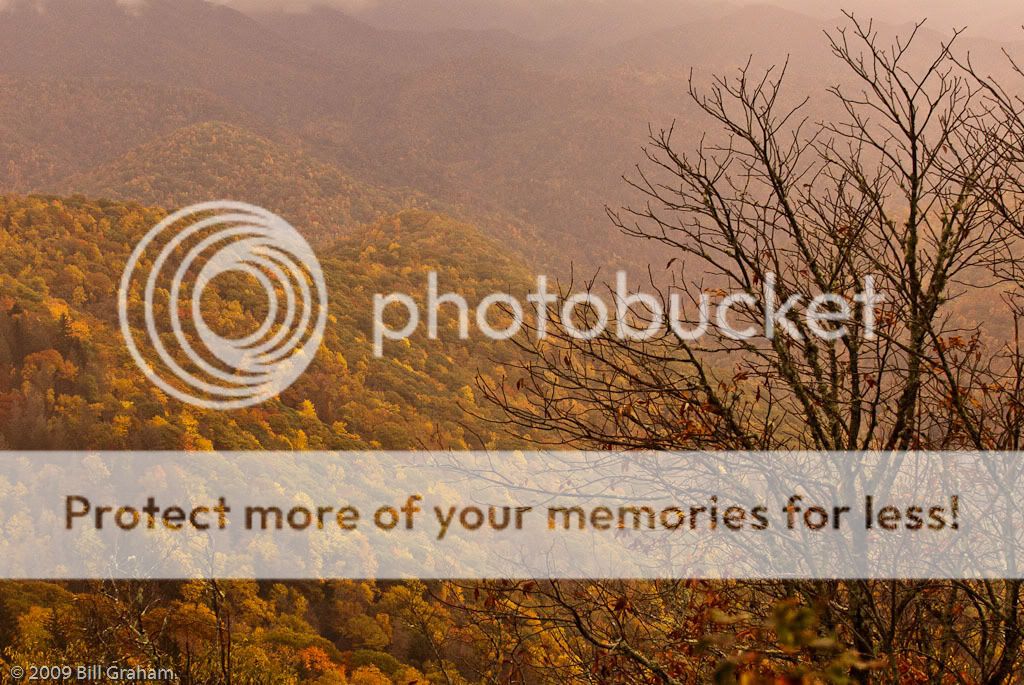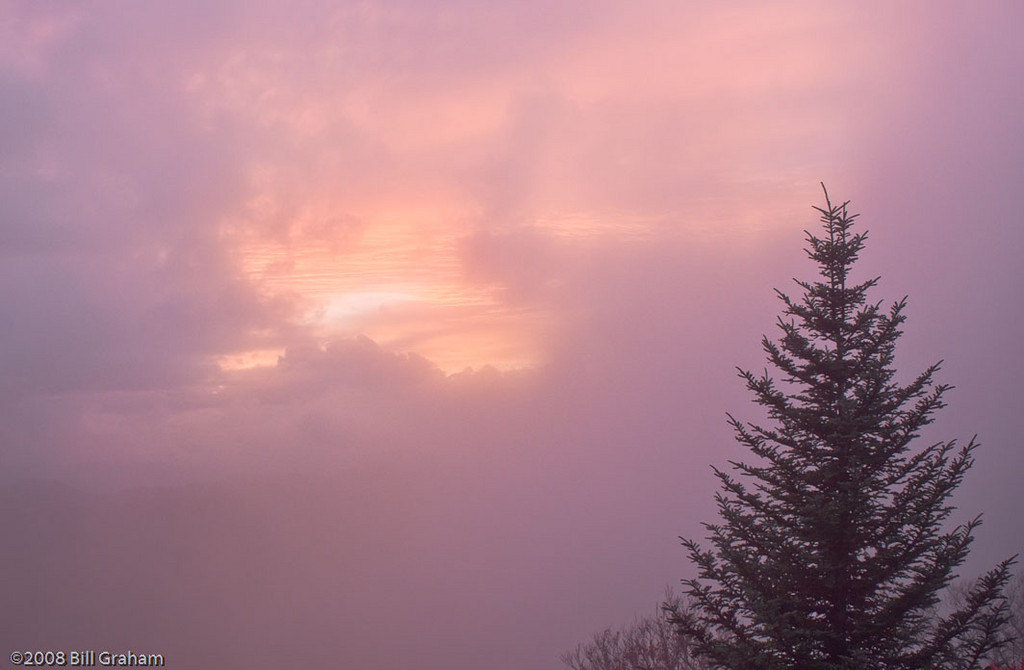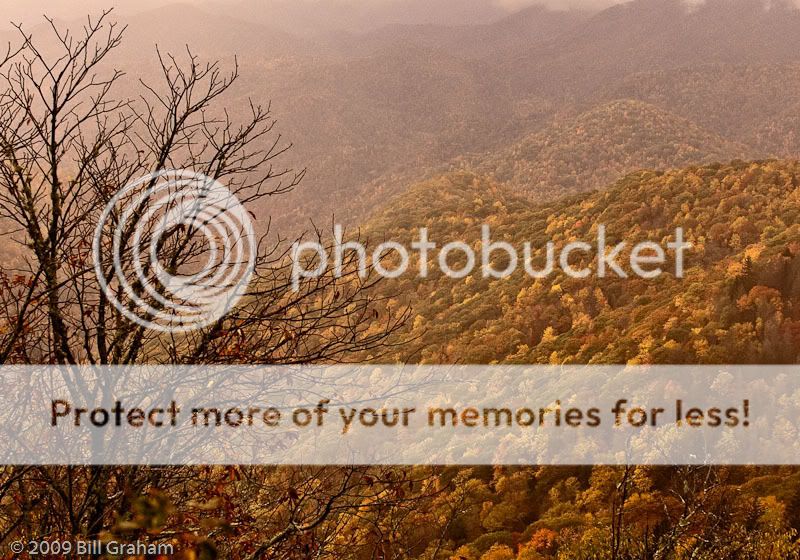Bill Graham
New member
This image was made on a trip up on the Blue Ridge Parkway in North Carolina last Fall. It was the last shot on the first day of the trip, we had driven through rain and dense fog most of the day but late in the afternoon the fog lifted and we had a pretty decent sunset.
When I got home, I downloaded the photos from the trip into Lightroom and did my selects, this photo didn't even make the first cut. Last week I was getting ready to upload some to my Smugmug gallery and it caught my eye. I did a little PP and this is what I came up with:

Nikon D300, 1/10 sec.@f8, ISO800, 70-200 f2.8VR@70mm
Looking back at the photo again, I was mainly attracted to the warm tones and then the graduation of contrast, starting with the immediacy of the tree in the foreground, softening to the trees on the hill in the middle and another gradation or two before fading out into ultimate softness at the top center.
Please forgive me, I'm not very skilled at the language of photo critique and I'm a mostly left-brained personality so I'm not expressing myself very well. I do my work mainly for myself so I'm not used to soliciting opinions, but I figure if I'm to advance my skills/art, I need feedback from others and this forum is the best place I've found on the web for honest and articulate critique.
So I would appreciate any comments and suggestions you'd care to offer.
TIA,
Bill
more from this trip here:http://billg71.smugmug.com/gallery/8629295_a5NW9#569274895_5RoBG
When I got home, I downloaded the photos from the trip into Lightroom and did my selects, this photo didn't even make the first cut. Last week I was getting ready to upload some to my Smugmug gallery and it caught my eye. I did a little PP and this is what I came up with:

Nikon D300, 1/10 sec.@f8, ISO800, 70-200 f2.8VR@70mm
Looking back at the photo again, I was mainly attracted to the warm tones and then the graduation of contrast, starting with the immediacy of the tree in the foreground, softening to the trees on the hill in the middle and another gradation or two before fading out into ultimate softness at the top center.
Please forgive me, I'm not very skilled at the language of photo critique and I'm a mostly left-brained personality so I'm not expressing myself very well. I do my work mainly for myself so I'm not used to soliciting opinions, but I figure if I'm to advance my skills/art, I need feedback from others and this forum is the best place I've found on the web for honest and articulate critique.
So I would appreciate any comments and suggestions you'd care to offer.
TIA,
Bill
more from this trip here:http://billg71.smugmug.com/gallery/8629295_a5NW9#569274895_5RoBG



